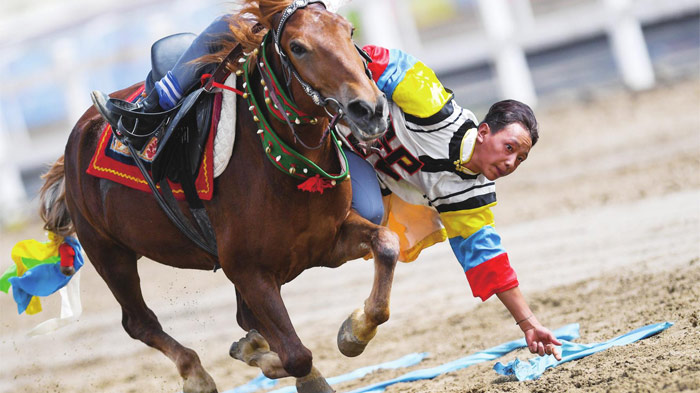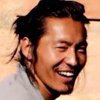
Tibet or Bhutan? Difference between Tibet and Bhutan
Lying on opposite sites of the Himalayas, Tibet and Bhutan are two amazing destinations that are famous for stunning landscapes, unique cultures, and religions. But they still have vast differences as well. From the scenery and culture to the people, the food, and the climate, you will be surprised what is the same and what differs from one side of the Himalayas to the other.
If you are curious about the Himalayas, if you are on the fence about which destination, Tibet or Bhutan, is the best to visit, then these differences below will give you a better idea of them so that you can make the best travel plan to your favorite destination of the Himalaya.
Are Tibet tours and Bhutan tours interchangeable?
High up in the Himalayas lie two of the oldest isolated civilizations in the world. Cut off from the outside world for centuries, Tibet and Bhutan are two of the original Himalayan kingdoms that have only recently become popular as tourist attractions for international travelers.
Both devoutly Buddhist, Tibet and Bhutan have a great many things in common, but are not really interchangeable. Even though both Tibetans and Bhutanese people are devoutly Buddhist, the differences between Tibet and Bhutan make different travel experiences and make both places unique destinations for international travelers.
Different Tour Highlights between Tibet and Bhutan
Since Tibet tours and Bhutan tours are not interchangeable, the question of which destination is better to choose is one that many tourists are troubled by. Here are some differences you may experience during your trip, which could help you make a better decision and plan for your trip to the Himalayas.
Tibet Scenery VS Bhutan Scenery
In Tibet, the high plateau scenery is as breathtaking as the air itself. It is mostly made up of dry arid stretches of land surrounded by mountains and vast tracts of the highland prairie. Some southern parts of this ancient region are lush and green, while the remote western Tibet is a barren and unvegetated area.
While visiting Tibet, you will appreciate the stunning highland scenery that you can only see on Tibet Plateau. And a trip to a holy Lake, either Namtso Lake or Yamdrok Lake, will make you marvel at the magnificent beauty of the highland lakes.
 Bhutan with lush forest
Bhutan with lush forest
Bhutan, however, has a vastly different type of scenery. Bhutan is a lush green land beneath the Himalayas, full of forests and valleys of lush green meadows. As you move further south the scenery becomes greener and less harsh, with dense forests covering the lower slopes of the mountains and running to the lush green southern plains.
Tibet Culture VS Bhutan Culture
Tibetan culture is devoutly Buddhist, and its people live by Buddhist traditions throughout their daily lives with a few differences from Bhutanese culture. In Tibet, the culture is based on the altitude of the plateau and its geographic and climactic conditions, which have been somewhat influenced by the region’s neighbors in Nepal and the rest of China.
In Bhutan, the culture is also based on geographic and climactic conditions, but is more directed towards the preservation of the land and the ancient Buddhist traditions of the country. This includes the highly refined system of etiquette and a traditional code of conduct across the country.
Tibet People VS Bhutan People
Both Tibet and Bhutan are devoutly Buddhist and share many of the typical Buddhist customs.
When you travel to Tibet, especially visiting some holy monasteries, holy lakes, or Mount Kailash, you will see local Tibetan doing prostration along the way. This is a unique form of pilgrimage for Tibetans. When you encounter Tibetans doing prostration during your journey, please keep a certain distance from them to avoid disturbing them.
As the traditional nomad, the Tibetans have strong folk customs and likes to eat yak beef, highland barley, and other food unique to the plateau.
 Horse Performance on Lhasa Festival
Horse Performance on Lhasa Festival
The people in Bhutan are a very different type, which is a bit more subtle and introverted and with customs and a culture that is more founded on the family unit. Bhutan is also famous for its national policy, initiated by the Bhutanese king, known as the policy of Gross National Happiness. This policy and philosophy guide the government of Bhutan in ensuring that the collective happiness and well-being of the people are instituted properly.
Tibetan Food VS Bhutan Food
Tibetan food actually reflects the plateau climate and geography as well, and with little rice available, highland barley is the staple of the Tibetan diet, built around yak meat and mutton, and with such hardy vegetables as potatoes, cabbages, turnips, and a penchant for noodles. You can taste authentic Tibetan food and snacks in a local Tibetan Teahouse. It will not only be a food taste tour but also a local cultural experience for your Tibet tour.
In Bhutan, there is more inclination for rice as a staple, though the rice here is red with a nutty taste. Bhutanese cuisine is traditionally spicy, as chilies are used as a vegetable in many dishes, such as the national dish which consists of chilies and cheese. However, Bhutanese cuisine has been influenced by Nepal and China, and the use of vegetables and noodles is common. Meals are always included in your Bhutan tour packages.
If you have special requirements for diet, like you need vegetable dishes, please tell your travel consultant in advance.
Different Costs for Traveling in Tibet and Bhutan
The cost of traveling in Tibet depends mainly on how long you will stay and where you will go. Tours in Tibet can cost as little as US$ 500 and as much as several thousand. However, this does not always include your accommodation and meals, and never includes your transport to the plateau. What it does include is the cost of the tour guide and driver, the private vehicle, and the tickets to the various attractions you will visit.
In Bhutan, there is a set minimum amount for the daily cost of a tour in the kingdom. This is known as the Minimum Daily Fee (MDF), which is set at US$ 250 per day, for each day of the tour. In the low season, the MDF drops to just US$ 200 per day, to promote tourism in the low season months. However, unlike Tibet, the MDF in Bhutan covers everything on your tour, from your visa and permits to the cost of your hotel accommodation and main meals. Additional expenses such as souvenirs, snacks, and room service are not included, nor is the usual tip for the guide/driver. The Minimum Daily fee does not have to be just 250 dollars though. As it says, it is the “minimum”, so you can arrange a tour that costs more per day if you can afford it.
>>How Much Does It Usually Cost to Visit Bhutan: price inclusion&exclusion, travel season with costs
>>How to Plan Your Bhutan Travel Cost
Different Travel Documents Needed for Visiting Tibet and Bhutan
A great deal of travel documents is required for traveling in Tibet, including China Visa and Tibet Travel Permit. The Tibet Travel Permit is only available once a pre-booked tour is finalized and obtained by the tour operators on behalf of tourists. Without the Tibet Permit, you can not get into Tibet, even board a train or flight to Tibet. You can get a Chinese Visa through the embassy in your country. If you plan to enter Tibet from Nepal, you need to apply for Group Tourist Visa through the Chinese Embassy in Kathmandu.
 Tibet Travel Permit
Tibet Travel Permit
To visit Bhutan, you only need to obtain a Bhutan Visa. It must be obtained by the tour operator once the tour has been booked. The visa for Bhutan is also not forwarded to travelers. You will be sent a Letter of Invitation, which you will show to the immigration desk at Paro Airport. The reference number must be used to cross-reference with the information given to the airlines by the Tourism Council of Bhutan.
Plan Your Tour to Tibet and Bhutan with Us Now
No matter whether you travel to Tibet or Bhutan, it is important to travel with a reliable travel agency to help you arrange the local tour and get the required travel permits on your behalf.
Based in Tibet and with local offices in Kathmandu and Chengdu, we have years of experience in providing high-quality tours and authentic travel experiences in the Himalayan region. Just contact us to customize your trip to Tibet and Bhutan.
Conclusion
Tibet and Bhutan, located north and south of the Himalayas, are isolated from the outside world for centuries, The unique Buddhist cultures have always attracted tourists from all over the world to come and explore.
Many people would mistakenly believe that they are the same and that by visiting one place they can experience the mysteries of the Himalayas. In fact, they are irreplaceable as two unique destinations.
Similar religious beliefs form different customs and cultures in different regions. We hope that the differences between Tibet and Bhutan we have listed will give you a better understanding of these two destinations and help you plan your Tibet Bhutan tour better.

Energetic, responsible and reliable, Sonam is a guide with more than seven years experience informing visitors about heritage sites and attractions places in Tibet.


.jpg)



0 Comment ON "Tibet or Bhutan? Difference between Tibet and Bhutan"